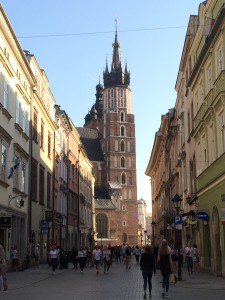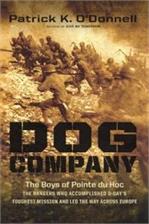During one of our days here in Berlin, we got a tour of the Bundestag, the German parliament building. As our tour began, our guide pointed out how easy it was to see from one side of the Bundestag to the other and how the heavy usage of glass within the building made it possible for a person outside the building to see into the main chamber of the Bundestag. The tour guide made sure to emphasize that the Bundestag was created around the idea of visibility and that nothing was hidden from the public. (German citizens are actually free to sit in on government sessions if they really want to know what is going on in their government.) I feel that the concept of visibility can also be extended to how Berlin chooses to teach people about the Second World War. Out of all of the cities we have traveled through during this trip I feel that Berlin has the most comprehensive memory of the Second World War. There are monuments and museums for the villains and the victims, the well-known figures and the average people, for Germans and non-Germans.

Three small plaques situated in the sidewalk right outside of our hotel in Berlin mark the place where three people were deported from Berlin during the war.
On our first full day in Berlin, we headed for the German Historical Museum where we visited their modern warfare wing. I have to say that I felt a little overwhelmed with just how much information the museum was giving us. Everywhere I looked there were pictures, old propaganda posters, newspaper clippings, and a seemingly never-ending wall of text that worked to tell the tale of Germany through the twentieth century. I felt like all the information was presented to us in an unbiased fashion and that nothing was hidden. After the German Historical Museum we headed to the Topography of Terror museum which focused solely on the perpetrators of the war. Again, I felt overwhelmed by how much text there was in the museum, all of it focused on making sure the visitors knew the facts about the past.

The Memorial to the Homosexuals Persecuted Under Nazism, tucked away in a corner of the Tiergarten. This memorial, dedicated in 2008, is the third of only 3 memorials in all of Germany dedicated to the gay victims of the Holocaust.
Considering the fact that Germany was the main perpetrator, I wasn’t that surprised by how many statues, memorials, and museums there were dedicated to the victims of the war. I found that the memorials could be extremely vague sometimes and other times so specific that it was dedicated to one person. During our first day in Berlin, we briefly visited the Neue Wache which houses the National Memorial to the Victims of War and Tyranny. This memorial seemed too broad of dedication to actually mean anything but perhaps they created the memorial in case a specific victim group felt unrepresented. When it comes to more specific examples, I found small memorials around town dedicated to individual victims of deportation and the Holocaust. It was a little chilling to look down at the small plaques in the middle of a sidewalk and think of how someone had been taken from that very spot years before and sent to a ghetto or a camp. Other memorials I visited that were dedicated to the victims of the Nazi regime was the Memorial to the Homosexuals Persecuted Under Nazism and the Memorial to the Murdered Jews of Europe, also known just as the Holocaust Memorial. The Holocaust Memorial is a large and relatively well known memorial within Berlin- every time I passed it there were plenty of people visiting the site –but the memorial to the persecuted homosexuals seemed not only just out of the way but also a little underwhelming. I understand that the persecution of the Jewish people was much more extensive and well known but perhaps it would have been better if the monument to the homosexual victims of the Holocaust was not tucked away in some dark corner of the Tiergarten and instead somewhere more visible.

A section of original graffiti written by Soviet soldiers in 1945 still remains on the walls of the Bundestag.
Something that I was initially surprised about was how many memorials to the Soviets there were around town. However, after some thinking, it made sense. The Soviets were the first to reach Berlin and liberated the city. After the war half of Berlin was put under Soviet control; it’s understandable that they wanted to make sure their people’s efforts were known and praised. Perhaps the most interesting nod to the Soviets I saw during my tour of the Bundestag. In one of the halls in the Bundestag there was still Soviet graffiti on the walls from when the Soviets took over the Bundestag during the fight for Berlin at the end of WWII. I definitely was not expecting the graffiti inside such a modern and clean building but it just serves as another example of Berlin putting its history out into the open.

The Soviet War Memorial in Treptower Park was one of the largest memorials I’ve ever seen. The memorial was completed in 1949 and served as the main war memorial for East Germany.
Although there is still some room for improvement, Berlin is a city that works hard at coming to terms with its past and I am so thankful that I got the chance to experience such a city because of this study abroad program.















